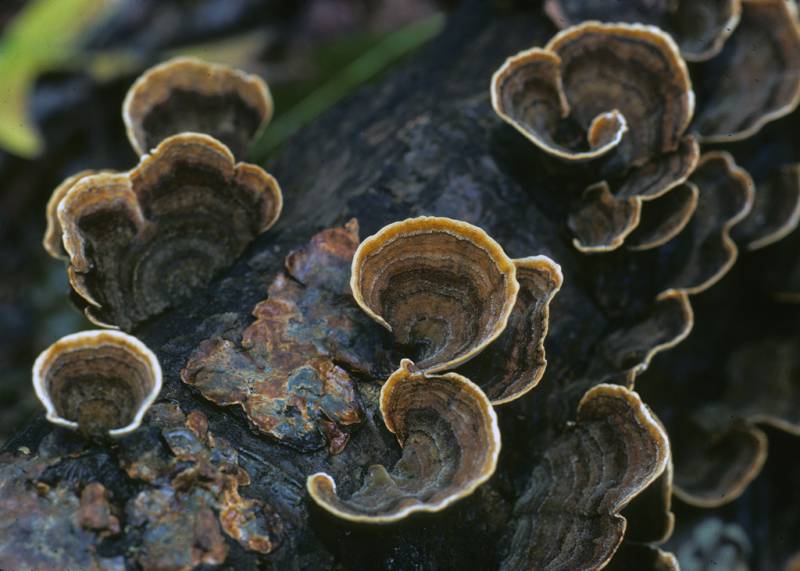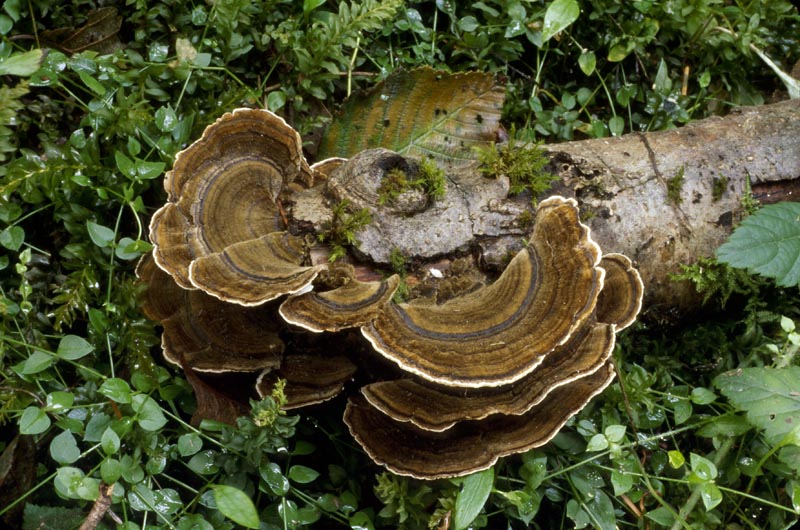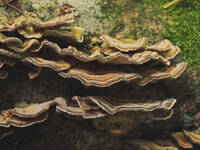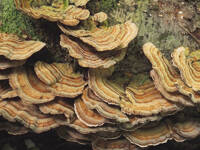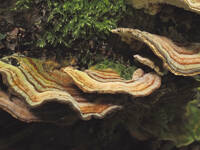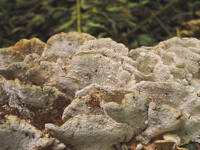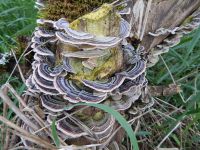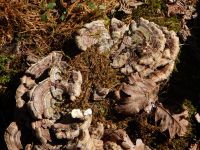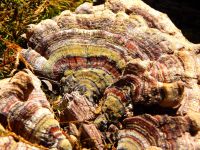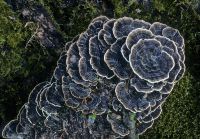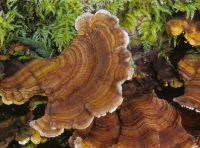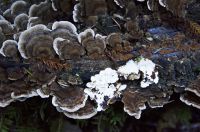Conservation Status: Not of concern
Turkey Tail is a very common polypore in our region, occurring extensively on hardwood substrates and rarely on conifer wood. It can be found almost any time of the year, but is most common in summer and fall. The thin, flexible fruitbodies are produced annually but they are tough-fibrous and persist for a long time. The velvety to silky caps with concentric zones of different colors---white, buff, yellowish, brown, reddish brown, blue, and black---make this species easy to recognize in the field. The pores are white to yellowish white or grayish, thin-walled, small, and circular to angular, and the flesh is whitish with a black layer below the surface tomentum. T. ochracea (Persoon) Gilbertson & Ryvarden is white to buff or reddish brown in color, less distinctly zoned, and usually has a more rigid structure. Several species of Stereum are similar to Trametes species, but have a smooth undersurface. Other thin, tough, polypores include the genus Trichaptum which has angular to tooth-like violet tinged pores, and Cerrena unicolor (Bulliard Fries) Murrill which has elongated pores and corky duplex flesh, with a pale brown lower layer separated from a darker upper layer by a narrow dark zone. T. versicolor has a history of medicinal use in Asian cultures and now is the subject of western medical research.
PNW Herbaria: Specimen records of Trametes versicolor in the Consortium of Pacific Northwest Herbaria database
CalPhotos: Trametes versicolor photos

